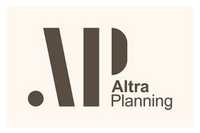

Highly Productive Land Case Law - Blue Grass Limited v Dunedin City Council [2024] NZEnvC 83
Case law is important because it serves as a guide for how laws are interpreted and applied in specific situations. One particularly interesting case law that has been released is the Blue Grass Limited v Dunedin City Council [2024] NZEnvC 83 which relates to how the National Policy Statement for Highly Productive Land (NPS-HPL) is applied.
The Environment Court's decision in Blue Grass Limited v Dunedin City Council [2024] NZEnvC 83 clarifies the definition of Highly Productive Land (HPL) under the NPS-HPL. The Court ruled that applicants cannot challenge the Land Use Capability (LUC) mapping of their land as identified by the New Zealand Land Resource Inventory (NZLRI), even if more detailed site investigations suggest that the land is not LUC 1, 2, or 3. This means that rural land mapped as LUC 1, 2, or 3 remains classified as HPL until regional councils complete their mapping and update regional policy statements accordingly.
Consequently, landowners and applicants cannot use their own site specific mapping (Agronomist Assessments) to challenge the HPL classification and must await regional policy changes. Applicants need to rely on exceptions in the NPS-HPL for highly productive land use and development.
As a side note to the case law, the Government intends to refocus the NPS-HPL where the most productive soils (Land Use Categories 1 and 2) will remain protected, while Land Use Category 3 (LUC 3) soil will be excluded from the definition of highly productive soil, opening land up for development. The exact details of this are yet to be confirmed by the government.






